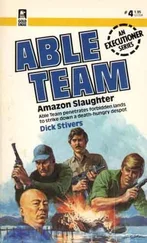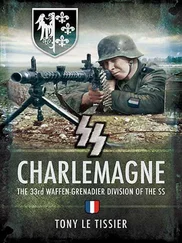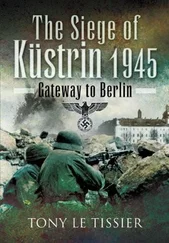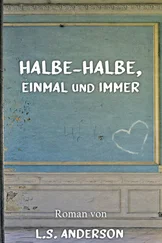Wilke, Am Rande der Strassen , p. 54.
Domank, ‘The 1st Guards Breakthrough Artillery Division at Halbe’.
Lakowski/Stich, Der Kessel von Halbe 1945 , pp. 66–8.
Ibid ., p. 68.
Wilke, Am Rande der Strassen , p. 83.
Gädtke, Von der Oder zur Elbe , pp. 32–3. German soldiers were issued with waterproof tent-halves that could be worn as capes or fastened together to form simple pup-tents.
Domank, ‘The 1st Guards Breakthrough Artillery Division at Halbe’.
Wilke, Am Rande der Strassen , p. 54.
Lakowski/Stich, Der Kessel von Halbe 1945 , pp. 101–2.
Ibid .
Förster/Lakowski, 1945 – Das Jahr der endgültigen Niederlage der faschistischen Wehrmacht , p. 342 [citing Federal Military Archives RH W.30.10./6, Sheet 842].
Brand in the author’s Death Was Our Companion .
Von Luck, Gefangener meiner Zeit , pp. 259, 264–5, 270–1.
Lakowski/Stich, Der Kessel von Halbe 1945 , p. 97.
Koniev, Year of Victory , p. 180.
Spaether, Die Geschichte des Panzerkorps ‘Großdeutschland’ , pp. 637–8.
Kortenhaus, Der Einsatz der 21. Panzer-Division , p. 140.
Lakowski/Stich, Der Kessel von Halbe 1945 , pp. 104–5, citing Krauß Report, 1997.
Wilke, Am Rande der Strassen , pp. 123–4.
Lakowski/Stich, Der Kessel von Halbe 1945 , pp. 97–8.
Wenck, ‘Berlin war nicht mehr zu retten’, p. 66.
Gellermann, Die Armee Wenck , p. 84.
Tieke, Das Ende zwischen Oder und Elbe , p. 238.
Lakowski/Stich, Der Kessel von Halbe 1945 , p. 105 [citing Federal Military Archives RH 19 XV/10, Sheet 393f.].
Halbe mahnt…! 1963 pamphlet, pp. 15–16.
Ibid ., p. 17.
Wilke, Am Rande der Strassen , p. 124.
The second highest Soviet decoration after the Order of Lenin.
Adapted from Harry Zvi Glaser’s account in the author’s With Our Backs to Berlin .
Wilke, Am Rande der Strassen , p. 63.
Domank, The 1st Guards Breakthrough Artillery Division at Halbe’; Lakowski/Stich, Der Kessel von Halbe 1945 , p. 108.
Koniev, Year of Victory , p. 184; Erickson, The Road to Berlin , p. 600. Koniev was still aiming for the Reichstag.
Koniev, Year of Victory , p. 184. The only Plauener Strasse then and now is in Hohenschönhausen in north-east Berlin. Koniev probably meant Pallasstrasse.
Koniev, Year of Victory , p. 187.
Wilke, Am Rande der Strassen , p. 48.
Tieke, Das Ende zwischen Oder und Elbe , p. 312.
Lakowski/Stich, Der Kessel von Halbe 1945 , p. 111.
Lakowski/Stich, Der Kessel von Halbe 1945 , pp. 111–18.
Tieke, Das Ende zwischen Oder und Elbe , p. 315.
Letter to Dr Lakowski, cited in Lakowski/Stich, Der Kessel von Halbe 1945 , pp 182–3.
These tanks are referred to indiscriminately by witnesses as either Tigers or Königstigers. Schulze, Der Kessel Halbe–Baruth–Radeland , p. 83 supplies the following information:
‘The exact number of Tiger IIs available near and in Halbe cannot be established due to the varied and conflicting accounts. The strength return for the 502nd at Klein Hammer gives seven each for the 1st and 2nd Companies, but already here the figure of seven for the 1st Company is doubtful. Tieke, Das Ende zwischen Oder und Elbe , gives 14 in Halbe, Scholz counted 12 in Halbe at night. Führling, Endkampf an der Oderfront , says 13 and Streng/Ott seven. Even the standard works have doubts, so that one must enquire about each tank: was it really a Tiger, or in fact a Panther? Thus three Tigers were listed as casualties in or near Halbe, Kuhnke (211), Harlander (213) and Münster (214). Apparently a further two Tigers were lost between Halbe and Löpten. Steng/Ott’s account of seven refers to Massow, where Schneider gives five, two having become stuck crossing the autobahn and having to be blown up. Thus two tanks were lost, one of them Kämp’s (123).
Of the six Tigers of the 502nd in Massow early on 29 April 1945, we have the following fates:
Hellwig’s 222 was ordered by Streng to secure the Reichsstrasse 96 crossing to the north towards Wünsdorf. Hellwig came back without it, the Tiger having had to be blown up by Neuhof.
Pott’s Tiger was shot up on the R 96 and none of the crew was able to bail out.
Stehmann’s 111 was blown up between Fernneuendorf and Sperenberg.
Neu’s Tiger stopped near Märtinsmühle (or Hennickendorf?) with water in the fuel.
Streng/Ott’s penultimate Tiger 223 was shot up at about 0500 hours on 1 May between Schönefeld and Zauchwitz, about 300 metres south-east of the footbridge over the Nieplitz stream. After the wounded crew had bailed out, now under the command of Neu, the tank blew up and the 18-ton turret was blown off. Ott ended in Soviet captivity.
Klust/Fink’s last Tiger, finally under the command of SS-Lieutenant Egger, reached the radio towers between Schönefeld and Elshoz, where they tanked up with diesel. The vehicle drove on for a further three or four kilometres before giving up the ghost. Driver Fink had discovered, without realising it, the later much cited multi-fuel engine. The tank was blown up in 1946/47.
According to an eyewitness, Erwin Schade, who was then 14 years old, bits flew up to fifty metres away.’
Tieke, Das Ende zwischen Oder und Elbe , pp. 332–3; Ziemke, Battle for Berlin , p. 119; Komornicki, Polnische Soldaten stürmten Berlin , p. 143.
Tieke, Das Ende zwischen Oder und Elbe , p. 315.
Lakowski/Stich, Der Kessel von Halbe 1945 , p. 119.
Domank, The 1st Guards Breakthrough Artillery Division at Halbe’.
Lakowski/Stich, Der Kessel von Halbe 1945 , pp. 108–18.
Tieke, Das Ende zwischen Oder und Elbe , pp. 319, 321.
Ibid .
Lindner in the author’s Death Was Our Companion .
Fey, Panzer im Brennpunkt der Fronten , pp. 198–9.
Читать дальше












